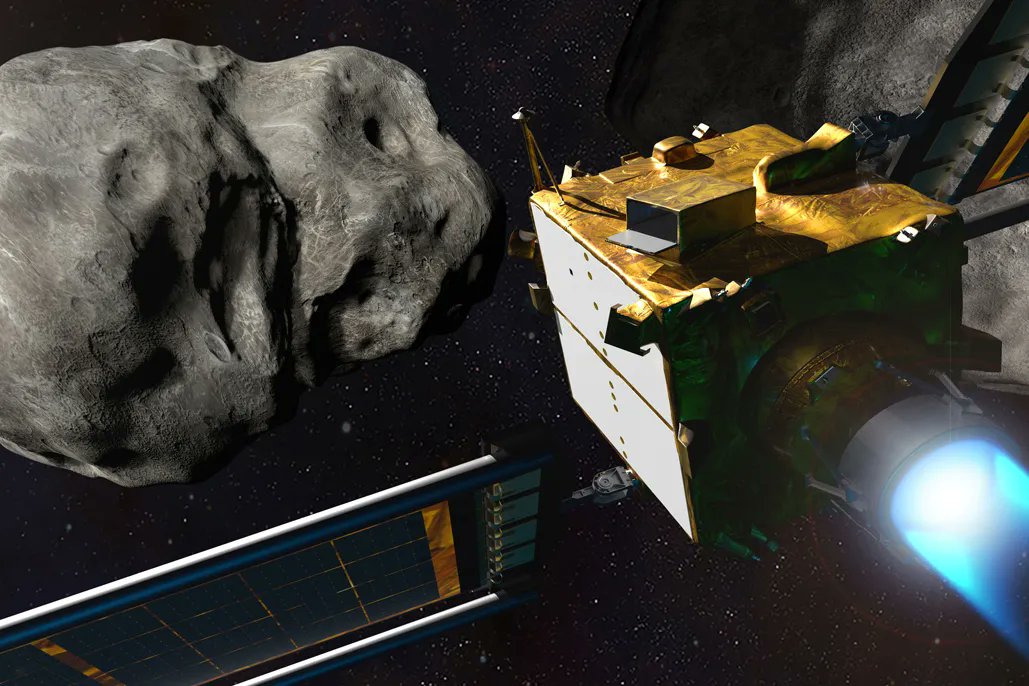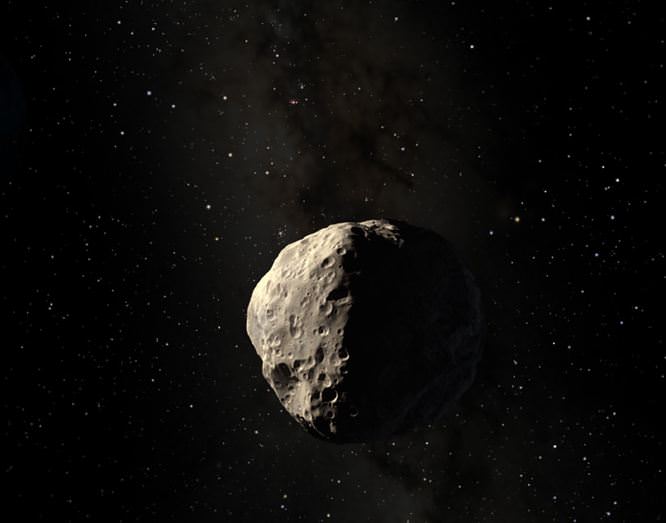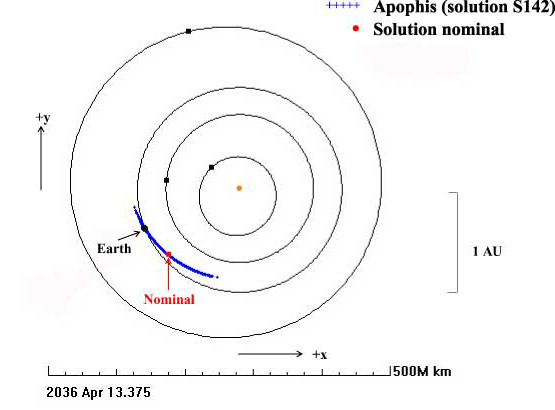It is truly wonderful to see so many nations aspiring to space exploration and trips to the Moon. Earlier this week on the 27th May, South Korea innaugurated its new space agency, the Korea AeroSpace Administration otherwise known as KASA. The group is headed up by former professor of aerospace engineering Yoon Young-bin. Whilst the group has yet to announce detailed plans for their upcoming missions Young-bin has stated they hope to land on the Moon by 2032 and to get to Mars by 2045.
Continue reading “South Korea is Planning to Send a Mission to Mars by 2045”Watch OSIRIS-REx Release its Sample Capsule
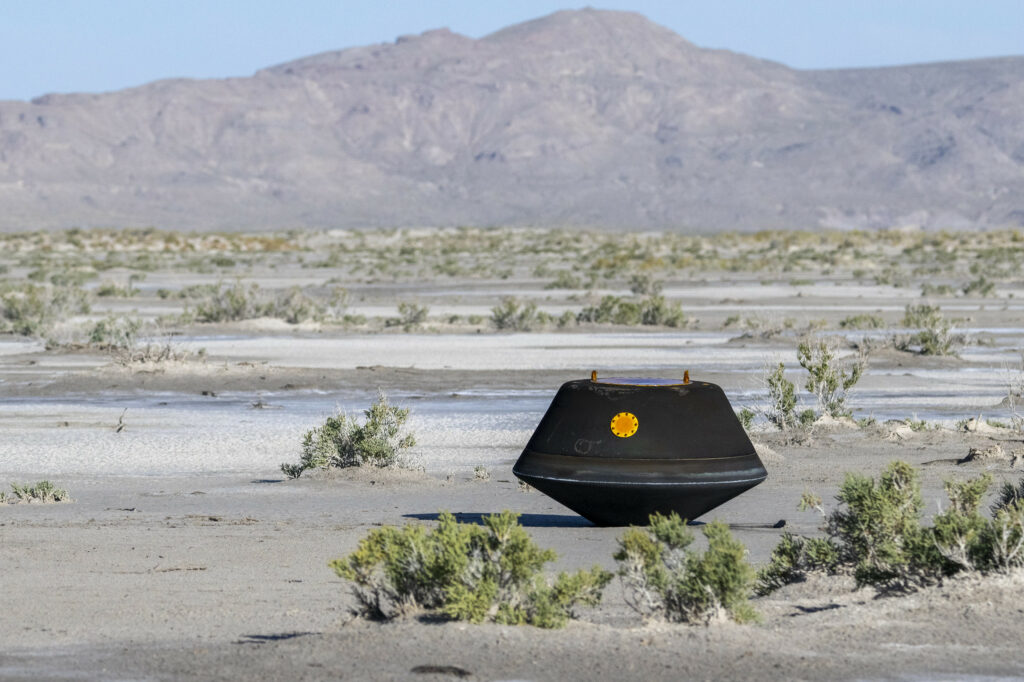
Most of the spacecraft we send out into the Solar System are never meant to return. Time, space, and entropy overtake them, or else they’re purposely sent crashing to their doom at the end of their missions. But not OSIRIS-REx. Its mission was only a success when it returned to Earth with its rare cargo.
Continue reading “Watch OSIRIS-REx Release its Sample Capsule”When an Asteroid Gets Close to Earth, we get a Rare Opportunity to Learn What it’s Made of
Gravity calculations can provide plenty of insight into a variety of phenomena. Everything from Einstein rings to the rocket equation is at least partially dependent on gravity. Now an undergraduate student and professor team from MIT think they have a new use for gravity calculations – understanding the interior density of asteroids.
Continue reading “When an Asteroid Gets Close to Earth, we get a Rare Opportunity to Learn What it’s Made of”Last-Minute Defense Against an Asteroid That Could Obliterate it Before Impact

Gazing at the night sky can evoke a sense of wonder regarding humanity’s place in the Universe. But that’s not all it can evoke. If you’re knowledgeable about asteroid strikes like the one that wiped out the dinosaurs, then even a fleeting meteorite can nudge aside your enjoyable sense of wonder. What if?
Luckily, planetary defence is at the top of mind for some scientists and engineers. One of those scientists is Professor Philip Lubin from the University of California Santa Barbara. Lubin is developing his idea called PI-Terminal Defense for Humanity. The PI stands for Pulverize It, and Lubin thinks pulverizing an incoming impactor into tiny pieces is our best bet to protect ourselves from an asteroid on short notice.
Continue reading “Last-Minute Defense Against an Asteroid That Could Obliterate it Before Impact”Asteroid Apophis’ 2029 Flyby Will Provide a Bonanza of Asteroid Science
If NASA and other space agencies don’t want us to freak out about asteroids colliding with Earth, why do they give them names like Apophis? It sounds apocalyptic.
Apophis was the ancient Egyptian god of Chaos. He was an evil serpent that dwelled in endless darkness, the enemy of light and truth. So when they informed us that an asteroid named Apophis was due for a close encounter with Earth in 2029, people were understandably anxious. After all, Earth’s previous dominant inhabitants were evicted by an asteroid.
Continue reading “Asteroid Apophis’ 2029 Flyby Will Provide a Bonanza of Asteroid Science”Careful Calculations Show That Earth is Safe From Asteroid Apophis for at Least 100 Years
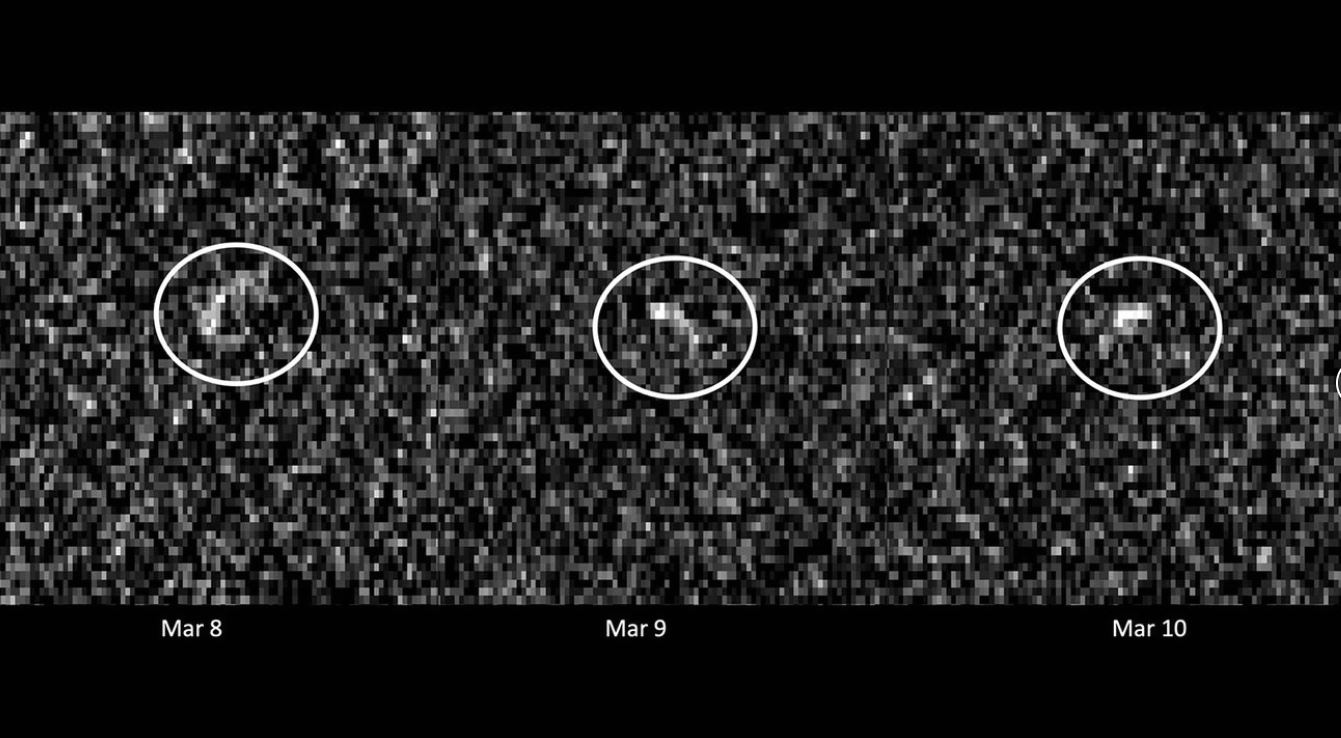
If you’re looking for doomsday, you can forget about asteroid Apophis. The latest radar observations have effectively ruled out any possibility of this near-Earth object (NEO) hitting Earth for the foreseeable future.
Continue reading “Careful Calculations Show That Earth is Safe From Asteroid Apophis for at Least 100 Years”The World’s Space Agencies are Responding to a Hypothetical Asteroid Impact. You Can Watch it all Unfold Online.
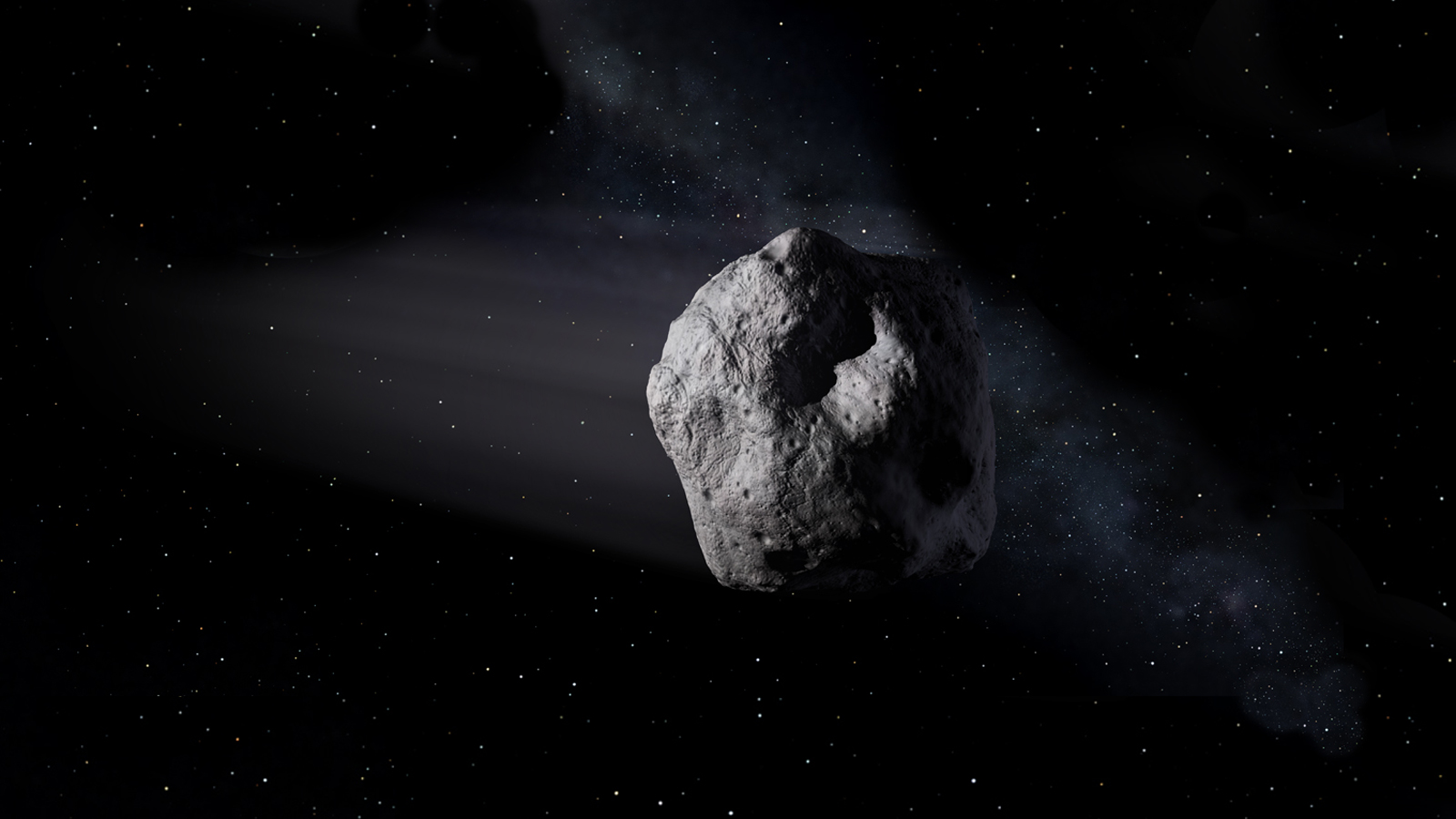
Remember when Orson Welles’ 1938 radio show called “The War of the Worlds” fooled people into thinking that Earth was actually being invaded? That was fun.
Now, the ESA (European Space Agency) is tempting fate by live-tweeting the hypothetical approach of the hypothetical asteroid 2019PDC and hypothetically planning a hypothetical response to this hypothetically destructive asteroid. In their hypothetical scenario, 2019 PDC has a 1 in 10 chance of striking Earth in 2029. And you can follow the action on Twitter.
Continue reading “The World’s Space Agencies are Responding to a Hypothetical Asteroid Impact. You Can Watch it all Unfold Online.”Watch Live Webcast of Asteroid Apophis Earth Flyby
Once again, the Slooh Space Camera team will host a live webcast of an asteroid flyby of Earth. This one might be a bit more intriguing than others, if only because of the connotation this asteroid has. Asteroid Apophis a near-Earth asteroid with an estimated diameter of almost three football fields (270m), is making its closest approach to us this year — but it will still be quite distant, at about 14 million km – but this is close enough for astronomers to study the space rock and assess its future risk.
On Wednesday, January 9th, Slooh.com, will start the webcast at 4 p.m. PST / 7 p.m. EST / 00:00 UTC (1/10) — International times here — accompanied by real-time discussions with Slooh President Patrick Paolucci, Slooh Outreach Coordinator and Engineer Paul Cox, and Documentary Filmmaker Duncan Copp.
Continue reading “Watch Live Webcast of Asteroid Apophis Earth Flyby”
Deflecting Incoming Asteroids with Paintballs
An artist’s rendering of the asteroid Apophis. Credit: ESA
What would be a way to deflect asteroid Apophis if it gets a little too close for comfort in 2029 or 2036? Pew-pew it with 5 tons of white paintballs. Not only would the multiple mini impacts bump the asteroid off course, but the white paint would cover the surface and reflect more sunlight, and over time, the bouncing of photons off its surface could create enough of a force to push the asteroid off its course.
That’s the idea of the winning entry in this year’s Move an Asteroid Technical Paper Competition, sponsored by the United Nations’ Space Generation Advisory Council. Sung Wook Paek, a graduate student in MIT’s Department of Aeronautics and Astronautics, says if timed just right, pellets full of paint powder, launched in two rounds from a spacecraft at relatively close distance, would cover the front and back of an asteroid, more than doubling its reflectivity, or albedo. The initial force from the pellets would bump an asteroid off course; over time, the sun’s photons would deflect the asteroid even more.
This video portrays how the paintball technique would work:
There have been lots of ideas put forth for possible asteroid deflection, such as using a gravity tractor to pull it off course, hitting it with a projectile or spacecraft to move it, or attaching a solar sail to change its course, to name a few.
Paek said his paintball strategy builds on a solution submitted by last year’s competition winner, who proposed deflecting an asteroid with a cloud of solid pellets. Paek came up with a similar proposal, adding paint to the pellets to take advantage of solar radiation pressure — the force exerted on objects by the sun’s photons.
In his proposal, Paek used the asteroid Apophis as a theoretical test case. This 27-gigaton rock may come close to Earth in 2029, and then again in 2036. Paek determined that five tons of paint would be required to cover the massive asteroid, which has a diameter of 450 meters (1,480 feet). He used the asteroid’s period of rotation to determine the timing of pellets, launching a first round to cover the front of the asteroid, and firing a second round once the asteroid’s backside is exposed. As the pellets hit the asteroid’s surface, they would burst apart, splattering the space rock with a fine, five-micrometer-layer of paint.
But this is not a quick-solution method, as Paek estimates that it would take up to 20 years for the cumulative effect of solar radiation pressure to successfully push the asteroid off its Earthbound trajectory. So if astronomers determine Apophis is a threat in 2029, we’re already too late. Additionally, the paintball method is not an option if estimates change for Asteroid 2012 DA14, which is predicted to pass very close to Earth on February 15, 2013, about 35,000 kilometers (21,000 miles) away.
Plus, using traditional paintballs, or traditional rockets for launching them, may not be ideal. Paek says the violent takeoff may rupture the payload. Instead, he envisions paintballs may be made in space, in ports such as the International Space Station, where a spacecraft could then pick up a couple of rounds of pellets to deliver to the asteroid.
But other substances could also be used instead of paint, such as aerosols that, when fired at an asteroid, “impart air drag on the incoming asteroid to slow it down,” Paek says. “Or you could just paint the asteroid so you can track it more easily with telescopes on Earth. So there are other uses for this method.”
Scientists have said the key to deflecting a dangerous asteroid is to find them early so that a plan can be developed. William Ailor, an asteroid specialist at Aerospace Corporation in California said that the potential for an asteroid collision is a long-term challenge for scientists and engineers.
“These types of analyses are really timely because this is a problem we’ll have basically forever,” Ailor says. “It’s nice that we’re getting young people thinking about it in detail, and I really applaud that.”
Source: MIT
Russia May Head Mission to Deflect Asteroid Apophis
[/caption]
Russia is considering sending a spacecraft to deflect a large asteroid and prevent a possible collision with Earth, according to a radio interview by the head of the country’s space agency. Anatoly Perminov said the space agency will hold a meeting soon to assess a mission to asteroid Apophis, and said NASA, ESA, the Chinese space agency and others would be invited to join the project. Apophis is a 270-meter (885-foot) asteroid that was spotted in 2004. It is projected to come within 29,450 kilometers (18,300 miles) of Earth in 2029, and currently has an estimated 1-in-250,000 chance of hitting Earth in 2036.
A panel at the recent American Geophysical Union conference stressed that asteroid deflection is a international issue.
“There is a geopolitical misconception that NASA is taking care of it,” said former Apollo astronaut Rusty Schweickart, who is part of the B612 Foundation, which hopes to prove the technology to significantly alter the orbit of an asteroid by 2015. “They aren’t and this is an international issue. The decisions have to be world decisions.”
Perminov seemed unaware that NASA’s Near Earth Object program recently downgraded the possibility of a 2036 asteroid impact and also for a subsequent pass in 2068.
Perminov said that he heard from a scientist that Apophis asteroid is getting closer and may hit the planet. “I don’t remember exactly, but it seems to me it could hit the Earth by 2032,” Perminov said. “People’s lives are at stake. We should pay several hundred million dollars and build a system that would allow to prevent a collision, rather than sit and wait for it to happen and kill hundreds of thousands of people.”
Perminov wouldn’t disclose any details of the project, saying they still need to be worked out. But he said the mission wouldn’t require any nuclear explosions.
“Calculations show that it’s possible to create a special purpose spacecraft within the time we have, which would help avoid the collision without destroying it (the asteroid) and without detonating any nuclear charges,” Perminov said. “The threat of collision can be averted.”
Boris Shustov, the director of the Institute of Astronomy under the Russian Academy of Sciences, hailed Perminov’s statement as a signal that officials had come to recognize the danger posed by asteroids like 2036 Apophis.
“Apophis is just a symbolic example, there are many other dangerous objects we know little about,” he said, according to RIA Novosti news agency.
Sources: Associated Press/Yahoo News, AGU panel discussion
Here’s some more information on the 2036 meteor.


